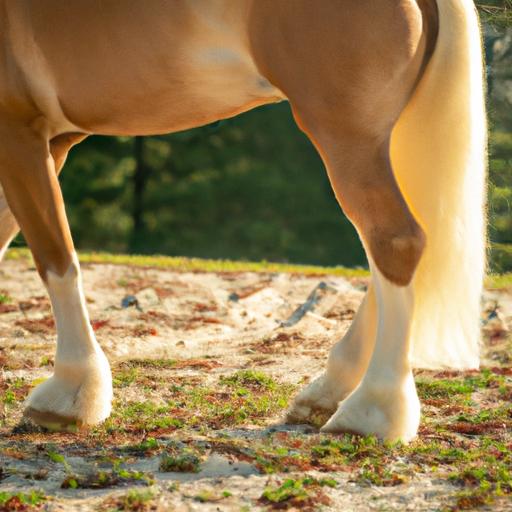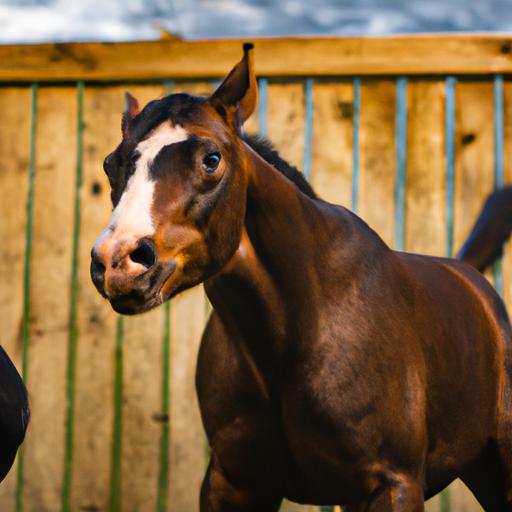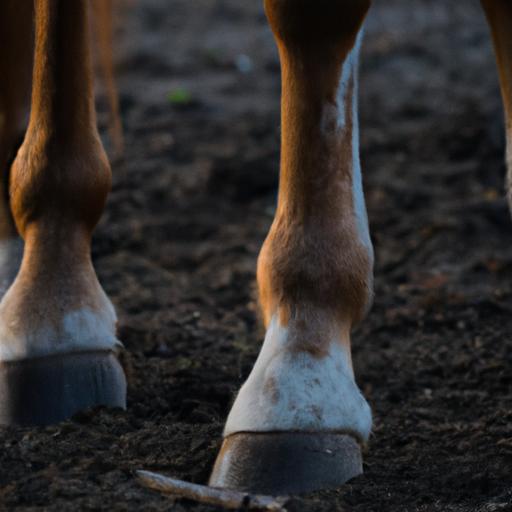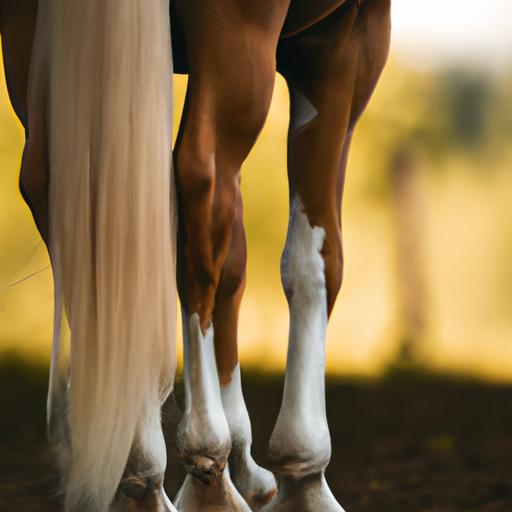Unveiling the enchanting elegance of horse breeds with feathered feet. Explore their significance, beauty, and practical advantages in equestrian world.
Have you ever been captivated by the graceful beauty of a horse with feathered feet? These enchanting creatures possess a unique characteristic that sets them apart from the rest. In this article, we will delve into the fascinating world of horse breeds with feathered feet, exploring their significance and why they hold a special place in the hearts of equestrians worldwide.
Feathered feet refer to the luxurious hair growth found on the lower legs of certain horse breeds. This feature adds an element of elegance and mystique to their appearance, making them truly stand out in any crowd. As you observe a horse with feathered feet, you can’t help but be drawn to the intricate patterns and textures that adorn their lower limbs.
But what makes feathered feet so important? Beyond their captivating aesthetics, these unique appendages serve a practical purpose. In the wild, horses with feathered feet were better equipped to navigate challenging terrains, providing them with enhanced traction and stability. This advantageous trait has been cherished and selectively bred over generations, resulting in specific horse breeds that possess this remarkable attribute.
As an equestrian, you may find yourself irresistibly drawn to horse breeds with feathered feet. Their allure goes beyond their physical appearance; it embodies the heritage and history of these magnificent creatures. Each breed has a story to tell, with their feathered feet acting as a testament to their lineage and resilience.
In the upcoming sections of this article, we will explore various horse breeds renowned for their feathered feet. We will delve into their distinct characteristics, the benefits that feathered feet bring to their performance, and the essential care required to maintain these exquisite features. So, join me on this captivating journey as we uncover the world of horse breeds with feathered feet, where elegance and functionality intertwine seamlessly.
Understanding Feathered Feet in Horses

Defining Feathered Feet and Their Significance
Feathered feet, as the name suggests, refer to the long, flowing hair that adorns the lower legs of specific horse breeds. This unique characteristic, often found in draft horses and some pony breeds, adds an exquisite touch to their overall appearance. The feathering typically extends from the fetlock joint down to the hoof, creating a mesmerizing display of elegance and beauty.
But what makes feathered feet significant in horse breeds? Beyond their aesthetic appeal, these feathery adornments serve practical purposes rooted in the horses’ ancestral history. The extra hair provides additional protection against harsh weather conditions, such as cold temperatures and wet terrains. It acts as a natural barrier, shielding the horse’s legs from the elements and potential injuries.
Furthermore, feathered feet contribute to the horse’s overall balance and stability, particularly when traversing uneven terrains. The luxurious hair helps them maintain better traction, reducing the risk of slips and falls. This feature has been particularly valued in working horses, aiding them in their duties such as pulling heavy loads or navigating challenging landscapes.
Unraveling the History and Origins of Feathered Feet
The origins of feathered feet can be traced back to ancient times when horses were essential companions in various cultures. Specific horse breeds developed this distinctive characteristic as a result of natural selection and selective breeding. The ancestral horses that roamed rugged terrains faced the need for additional protection and stability, which led to the development of feathered feet over time.
One notable breed renowned for its feathered feet is the Friesian horse. Originating from the Netherlands, these majestic creatures were historically used for war, agriculture, and transportation. The feathering on their lower legs not only served as an aesthetic feature but also provided protection and insulation during long journeys through marshes and challenging terrains.
Another breed associated with feathered feet is the Clydesdale. With its roots in Scotland, this breed was favored for its strength and versatility. The feathering on their lower legs not only added to their striking appearance but also served as a practical asset when working in harsh conditions, such as pulling heavy loads or plowing fields.
Understanding the significance and historical origins of feathered feet in certain horse breeds allows us to appreciate the rich heritage and functional advantages that this unique characteristic brings. In the subsequent sections, we will explore the notable horse breeds that exhibit feathered feet, delving deeper into their distinct features and the benefits they offer.
Notable Horse Breeds with Feathered Feet

1. Friesian
The Friesian horse, with its majestic presence and flowing mane, is one of the most renowned breeds recognized for its feathered feet. Originating from the Netherlands, these horses exude elegance and power. Their feathered fetlocks cascade with a silky abundance, creating an enchanting contrast against their dark, lustrous coat. Friesians are versatile creatures, excelling in dressage and carriage driving, captivating audiences with their graceful movements.
2. Gypsy Vanner
Originating from the British Isles, the Gypsy Vanner horse boasts feathered feet that seem to dance with every step. These enchanting creatures possess a sturdy build, adorned with abundant feathering that extends from their knees and hocks. With their gentle temperament and striking appearance, Gypsy Vanners have gained popularity as family horses and are often seen participating in parades and exhibitions.
3. Clydesdale
Renowned for their immense strength and captivating feathered feet, Clydesdale horses have become an iconic symbol, often associated with Budweiser commercials. Originating from Scotland, these majestic giants possess an impressive stature and an abundance of feathering that accentuates their powerful presence. Clydesdales are versatile working horses, excelling in agricultural tasks and captivating audiences when showcased in draft horse shows.
4. Dales Pony
Hailing from the hills of England, the Dales Pony exhibits a striking appearance with its sturdy build and feathered feet. These hardy ponies possess a gentle disposition and are known for their versatility, excelling in various equestrian disciplines such as driving, jumping, and even dressage. The feathering on their lower legs adds a touch of elegance to their compact frame, making them a favorite among equestrians seeking a reliable and versatile partner.
These are just a few notable horse breeds renowned for their feathered feet. Each breed possesses unique characteristics and a rich history that contributes to their allure. Whether you are captivated by the regal elegance of the Friesian, the magical presence of the Gypsy Vanner, the powerful stature of the Clydesdale, or the versatility of the Dales Pony, these remarkable breeds with feathered feet continue to captivate horse enthusiasts worldwide.
Benefits of Feathered Feet in Horses

Feathered feet in horses offer a range of advantages and functional benefits that contribute to their overall performance and well-being. Let’s uncover some of the key benefits that make these unique appendages invaluable to horse breeds with feathered feet.
Enhanced Traction and Stability
The luxurious hair growth on their lower legs provides horses with feathered feet a distinct advantage in terms of traction and stability. This feature allows them to navigate various terrains with ease, whether it’s traversing rocky landscapes or maneuvering through slippery surfaces. The feathering acts as a natural grip, giving these horses an edge when it comes to surefootedness and balance.
Protection from Elements
Feathered feet serve as a natural shield, protecting the lower legs of horses from external elements. The dense hair growth acts as a barrier against debris, mud, and even insects, reducing the risk of injury or irritation. This added protection ensures that the sensitive areas of their legs remain safeguarded, allowing these horses to maintain their optimal performance levels.
Increased Performance and Versatility
The functional benefits of feathered feet extend beyond aesthetics and protection. Horses with feathered feet often exhibit enhanced performance in various disciplines. Their surefootedness translates into improved agility and control, making them suitable for activities such as dressage, driving, and even trail riding. This versatility allows equestrians to explore a diverse range of equestrian pursuits, confident in their horse’s ability to excel.
Cultural and Historical Significance
Feathered feet hold cultural and historical significance, particularly in certain horse breeds. These unique features are often deeply intertwined with the breed’s heritage, representing a proud legacy. The preservation of feathered feet through selective breeding pays homage to the breed’s origins and the traits valued by their respective communities. Owning a horse with feathered feet not only grants you the benefits mentioned above but also connects you to a rich tapestry of history and tradition.
In the next section, we will shift our focus towards the essential care and maintenance required to keep feathered feet in pristine condition. So, let’s continue our exploration of horse breeds with feathered feet and learn how to ensure the well-being of these remarkable creatures.
Care and Maintenance of Feathered Feet
When it comes to horse breeds with feathered feet, proper care and maintenance are of utmost importance. These unique features require special attention to ensure the horse’s health and well-being. In this section, I will provide you with practical advice on how to care for and maintain feathered feet in horses, covering grooming techniques, trimming, and potential health issues.
Grooming Techniques for Feathered Feet
Grooming feathered feet requires a delicate touch and regular maintenance. Start by gently brushing the feathers to remove any dirt or debris that may have accumulated. Be sure to use a soft brush specifically designed for this purpose, as it will prevent damage to the delicate hair strands.
To maintain the health and appearance of the feathers, periodic washing is essential. Use a mild equine shampoo and warm water to cleanse the feathers thoroughly. Rinse them well, ensuring that no residue is left behind. After washing, allow the feathers to air dry naturally, as excessive heat or blow-drying can cause damage.
Trimming Feathered Feet
While feathered feet are visually stunning, they can also become prone to certain issues if not properly maintained. One common problem is the accumulation of mud and debris, which can lead to skin infections or hoof-related ailments. Regular trimming can help prevent these issues and maintain the overall health of the feathers.
Trimming feathered feet should be done by a professional farrier experienced in working with these specific horse breeds. They will carefully trim the feathers to a manageable length, removing any excess hair and reducing the risk of dirt buildup. This process not only keeps the feathers looking tidy but also helps to prevent potential health complications.
Potential Health Issues
Horses with feathered feet may be more susceptible to certain health issues, such as scratches (also known as mud fever) and thrush. Scratches occur when bacteria or fungi penetrate the skin, leading to inflammation and infection. Regular cleaning, drying, and applying a protective barrier can help prevent this condition.
Thrush, on the other hand, affects the hooves and can occur when moisture and bacteria get trapped in the hoof due to the dense feathering. Regular hoof cleaning and proper hoof care, including picking out debris and applying suitable treatments, can help prevent thrush from developing.
By dedicating time and attention to grooming, trimming, and addressing potential health issues, you can ensure that your horse’s feathered feet remain healthy, clean, and visually striking. Remember, the care and maintenance of feathered feet are not only vital for their appearance but also for the overall well-being of these magnificent creatures.


